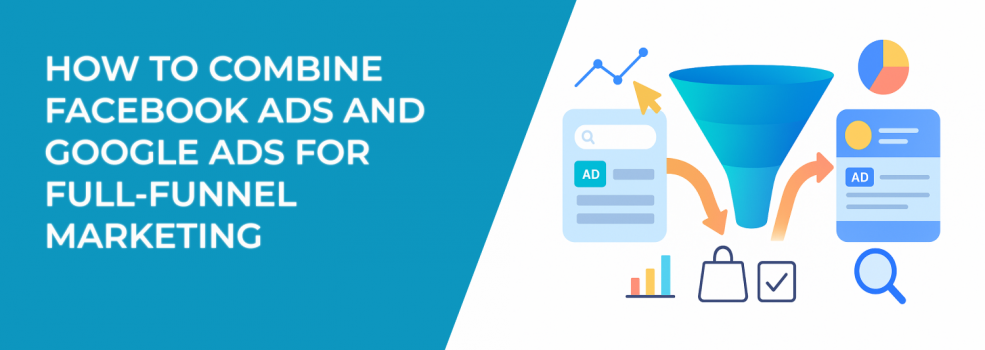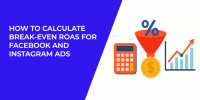Running Facebook Ads or Google Ads in isolation? You’re leaving too much potential on the table.
Advertisers who treat these two platforms as separate silos often hit invisible walls. Leads dry up. Costs go up. Campaigns plateau. That’s not because the platforms don’t work — it’s because they’re only doing half the job.
But when you combine Facebook Ads and Google Ads into a full-funnel marketing system, you’re not just reaching the right audience — you're doing it at the right time, with the right message, in the right channel.
Let’s break down how to do that — properly.
Why Use Facebook and Google Ads Together?
Because they complement each other in ways most brands overlook.
-
Google Ads reach people who are actively looking for something. It’s search-driven. High intent. Great for closing.
-
Facebook Ads let you introduce yourself to people before they even start searching. It’s pattern-interrupt marketing. Great for starting the conversation.
When used together, they help you:
-
Build demand where none exists yet (Facebook).
-
Capture demand when it's finally expressed (Google).
-
Retarget across both ecosystems, reinforcing your message.
-
Reinforce your brand at every stage of the buyer journey.
Think of it this way: Facebook helps people discover your brand. Google helps them find you again when they’re ready to act.
Awareness Stage: Plant the Seed with Facebook Ads
In the early stage of the funnel, you’re not selling — you’re showing up.
This is your chance to shape perception before someone hits Google and finds a dozen competitors.
Here’s how to make the most of it:
-
Use thumb-stopping creative. Bright, visually distinct videos or animations tend to perform best here.
-
Prioritize storytelling over selling. Introduce your brand values, unique positioning, or the problem you solve.
-
Target interest clusters, not assumptions. Instead of vague interests like "online shopping", test layered combinations.
-
Avoid narrow targeting too early. Let Meta’s algorithm explore. Optimize for reach or video views instead of conversions.
To structure this phase effectively, it’s important to understand the difference between Custom and Lookalike Audiences, and when to use each. This breakdown can help you choose the best audience seed strategy for top-of-funnel outreach.
Consideration Stage: Sync Messaging and Retarget with Precision
Once your audience knows who you are, it’s time to nurture them toward action.
Here’s where Facebook and Google should run side by side — each platform playing a unique role.
On Facebook/Instagram, use engagement signals to create custom audiences:
- Website visitors who didn’t convert.
- Video viewers who watched 50% or more.
- Users who engaged with your content.
Pair this with retargeting campaigns that use testimonials, product benefit highlights, or mid-funnel content. This article breaks down when to double down on retargeting versus letting Facebook's broad targeting do the heavy lifting.
On Google, shift your budget toward mid-funnel keywords:
- “[Your brand] reviews”.
- “Best [product] for [use case]”.
- “Is [product] worth it?”
This dual-channel middle funnel is where messaging consistency becomes crucial. Make sure users who saw your Facebook video aren't confused by unrelated copy in your Google search ads.
Conversion Stage: Close the Deal with Google Ads
Now the customer is actively searching. They’ve interacted with your brand — maybe on Facebook, maybe through a YouTube pre-roll — and now they’re in decision mode.
You want to be there. Not just once — but first.
Use:
-
Branded search campaigns to protect your name and dominate your category.
-
Dynamic search ads to surface deep landing pages.
-
Shopping campaigns to showcase product variations instantly.
To scale this stage while maintaining profitability, check out this performance guide. It explains how to balance automation with control as you grow your spend.
Also, this is a good time to reevaluate your bidding strategies. Should you switch to Max Conversions? Raise your budget on high-performing ad groups? Decisions at this stage move fast — stay nimble.
Post-Purchase and Loyalty: Keep Facebook Working
After someone buys, most advertisers walk away. But that’s where the best ROAS lives.
Use Facebook to:
-
Retarget with complementary products via Dynamic Product Ads.
-
Segment based on purchase behavior to send VIP offers or loyalty perks.
-
Encourage reviews, referrals, or UGC through engagement campaigns.
But what if your custom audiences seem to shrink or your delivery suffers? This guide shows how to maintain retargeting precision even after iOS updates limited tracking visibility.
Coordinate Your Cross-Platform Strategy
Running campaigns on both platforms won’t help unless they’re in sync. Without alignment, you’ll waste budget and confuse your audience.
Here’s how to stay aligned:
-
Use a shared funnel map. Know who you’re targeting, where, and why.
-
Keep messaging consistent. Repetition builds trust — mixed signals lose it.
-
Segment creative by funnel stage. Don’t show your hot offers to cold traffic.
-
Review attribution reports. Facebook and Google both want credit. You want truth.
For a deeper dive into this kind of analysis, explore how to assess ad performance beyond CTR and CPC. These metrics rarely tell the full story.
Final Thoughts: Build a Funnel, Not a Pile
Customers don’t follow a clean path. They bounce, pause, explore. But that doesn’t mean your strategy should be messy.
When Facebook Ads and Google Ads support each other — each playing to its strengths — your funnel becomes frictionless.
You’ll drive more conversions, lower costs, and build stronger brand memory.

